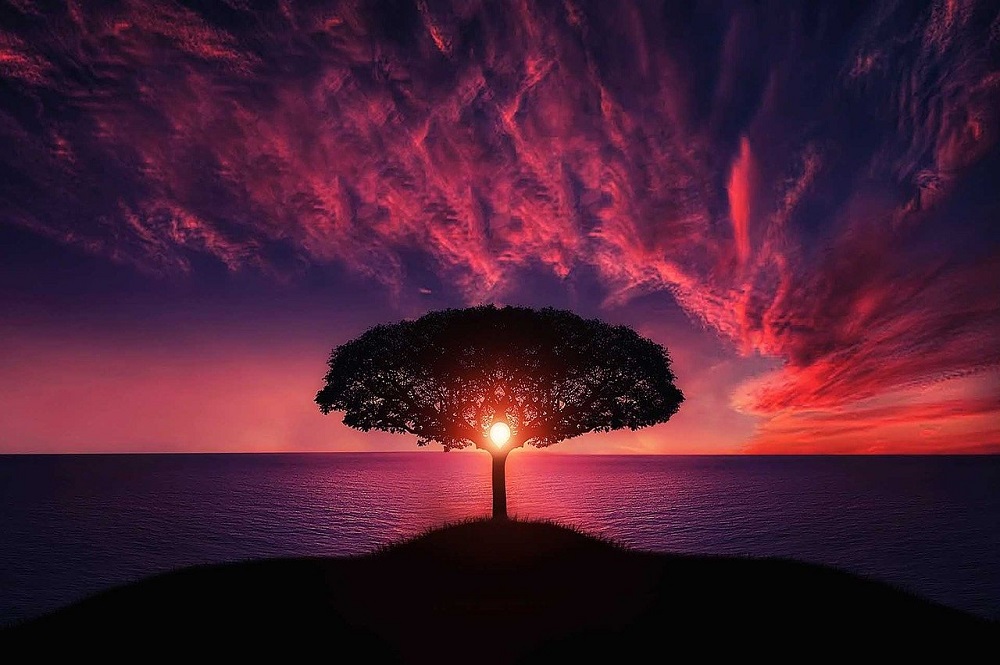You may not spend a lot of time thinking about the end of the world, but how we process it greatly influences how we live in the world today. Because John Wesley, a historic founder of Methodism, understood that in the end God would make the world right, he called Methodists to participate in God’s work of restoration.
New Creation
John Wesley painted a picture of the world to come in his sermon “The New Creation.” In it, he talked about three different heavens: the heaven of life after death, the heaven of the sky above us, and the heaven of the New Creation that is to come to earth.
Some of his ideas regarding what is going to come to earth might appear a little startling to us today. According to Wesley, for example, there will be no “blazing stars” or comets in the sky.
Whether those horrid, eccentric orbs are half-formed planets, in a chaotic state… or such have undergone a general conflagration, they will certainly have no place in the new heaven [here, referring to the sky], where all will be exact order and harmony.
There will be no more meteors with their horrid glare, affrighting the poor children of men.
Wesley envisioned a world free of chaos. And stars represented a bit too much disorder to have a place in the new night sky.
Wesley boldly predicted the seas will recede entirely “and appear on the surface of the earth no more.” Considering his own adventure on high seas, it is understandable John no longer wished to see the ocean.
Temperatures will become pleasurably temperate, “no more be bound up with intense cold, nor parched up with extreme heat.” And speaking of heat, fire will no longer consume with burning. This may also have sprung to John’s mind based on a harrowing life experience.
Wesley also foretold changing relationships within creation. No longer will one creature harm another—even for food.
ninety-nine parts out of a hundred, are under a necessity of destroying others in order to preserve their own life! But it shall not always be so.
The most glorious change will come through humanity. Quoting Revelation 21, Wesley predicts “no more death, and no more pain or sickness preparatory thereto; as there will be no more grieving for or parting with friends; so there will be no more sorrow or crying.” Then Wesley predicted there would be no more sin.
Participating in the vision
Wesley’s predictions may sound a bit fanciful, but that does not make them any less beautiful. He envisions a world free of the cycles of brokenness that often leave us wondering, “What is this world coming to?”
These bold and sometimes fanciful predictions reveal benevolent expectations for what the world is coming to. John Wesley’s thoughts about the New Creation suggest he believed that God’s ultimate aim was not to redeem the world by bringing it to heaven—but by establishing heaven on earth.
Wesley’s vision is drawn from Scripture. The apostle Paul’s writings reflect an expectation of the day when the Kingdom of God will be fully established on earth. Jesus spoke of the coming Kingdom, too. He called us to participate in the Kingdom of Heaven that is already among us and yet to come.
Following Jesus’ teachings regarding how we treat one another reveals an experience with Wesley’s realized prediction of a changed humanity--a humanity that does not hurt one another and is free from the sorrow of separation.
God will not establish the New Creation through Divine force. Instead, we participate in its arrival. Just as humanity was given the job of stewarding the good creation of God in Genesis, so too we are called to be partners in establishing God’s harmonious order today.
Wesley sought to enlist others in participating in works of mercy and grace, allowing humanity to experience the beauty of the New Creation.
United Methodist Social Principles
The United Methodist Church has not forgotten Wesley’s recommendations for participating in the practices of the New Creation. In fact, the Social Principles provide a detailed recipe for interrupting the cycles of brokenness in the world and participating in the ushering in of the New Creation. The Social Principles provide a detailed blueprint, relevant to our time and context, for restoring right relationships with each other and all creation.
At first glance, the Social Principles may appear complex. On the simplest level, however, they are recommendations for applying practices of healing and restoration to today’s broken relationships.
They provide a map for restoring a right and nurturing relationship with nature.
They provide recommendations on how we might use our money in healthy, encouraging ways.
The Principles also remind us of the vulnerability of the oldest and youngest among us, and how we might provide inclusion and empowerment to those who might be left forgotten.
The Social Principles ends with a litany re-listing the many cares of God: for the natural world, for all of humanity in our diversity, for those in poverty and those longing for peace. Each paragraph begins with “Today is the day…” reminding us that the New Creation Jesus, Paul and John Wesley all spoke of is still imminent. Today is the day we are invited to partner in ushering in the New Creation. God wills for it to be so… and so shall we.
*Ryan Dunn is the Minister of Online Engagement for the Rethink Church team at United Methodist Communications. Contact him at rdunn(at)umcom.org.
This story was published September 28, 2020.




